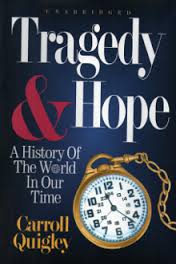The Lost Science of Money: The Mythology of Money – The Story of Power
by Stephen Zarlinga
American Monetary Institute (2002)
Book Review
This book, by co-author of Congressman Dennis Kucinich’s HR 2990 to abolish the Federal Reserve (see HR2990: Historic Bill to Abolish the Federal Reserve), is one of the most amazing books I’ve ever read. At 775 pages, the lowest price I could find for a used copy was $225 from Alibris. Fortunately it’s also available in PDF format at The Lost Science of Money
It’s clear from Zarlenga’s extensive documentation and footnotes that the research for this book took decades. He essentially rewrites western history dating back to the ancient Sumerians. His goal is to expose and correct all the distortions and myths introduced into official history historians in the pay of merchants and bankers. Both are fiercely committed to perpetuating our current global monetary system in which private central banks create and control the money supply.
Among many others, two of the myths Zarlenga explodes are that the Roman Empire collapsed due to barbarian invasion (he demonstrates very convincingly that Rome collapsed due to a debasement of their currency) and the often repeated claim that excessive government printing of money was responsible for the deadly inflation in the early years of the Third Reich – as Zarlenga points out, it was actually the privately owned central Reichsbank that issued the money and created the inflation.
The Concept of “True Money,”
Zarlenga begins by establishing a clear difference between “true money,” which he defines as money with a fixed value set by law and “commodity money,” in which private merchants and banks issue and control the value of money. In the rare historical periods where governments have issued and controlled money by law, the result has been long periods of political stability and flourishing industry and culture.
The Romans enjoyed the longest continuous period (200 years) of monetary stability. Roman leaders maintained control of their money by prohibiting silver and gold coinage for domestic use – issuing fixed value copper and bronze coinage instead. In this way they prevented foreign merchants from capturing control of their money supply and manipulating the value of their currency.
He Who Controls the Money Controls the World
Zarlenga carefully traces how after the fall of the Roman Empire, control of western money shifted from Constantinople (after the 4th Crusade which sacked Constantinople – see link), to Venice, to Portuguese traders in Antwerp (after they opened the trade route around the southern tip of Africa), to Amsterdam (following the civil war splitting the Netherlands into Holland and Belgium), to London (after the Dutch prince William of Orange seized the English throne). In each case, control of the money supply was far more important than military strength in consolidating political control.
Zarlinga also clarifies, though careful research, the historical role played by the Knights Templar and Jewish merchants and money lenders in the development of global monetary centers.
The Dutch Usurper Who Chartered the Bank of England
One of the sections that interested me most concerned the founding of the Bank off England – which set the global standard for all private central banks – in 1694. Previously I hadn’t realized that the Bank of England was started by a Dutch king (William of Orange), who usurped the English throne from James II. Nor that his purpose for chartering the Bank of England was to advance the interest of the Dutch merchants and bankers who initially controlled it.
“True Money” in the Americas
I also enjoyed the detailed section outlining the history of government issued money in the US. Again Zarlenga presents extensive and convincing evidence that it was the ability of colonial governors to issue their own money that enabled commerce and industry in the 13 original colonies, as well as enabling them to organize a successful war of independence against England.
Zarlenga also describes in detail the battle Jefferson, Andrew Jackson and their allies fought against the creation of a privately controlled central bank, as well as the immense popularity of the Greenback Congress issued during the Civil War – and the immense national uprising (the populist movement) launched at the end of the 19th century to save them.
The Federal Reserve Engineers the Great Depression
Obviously the book wouldn’t be complete without a chapter on the criminal conspiracy that lead to the formation of the Federal Reserve in 1913, the Federal Reserve’s role in engineering the Great Depression 26 years later, and Roosevelt’s prolonged battle with Wall Street to implement the New Deal recovery.





